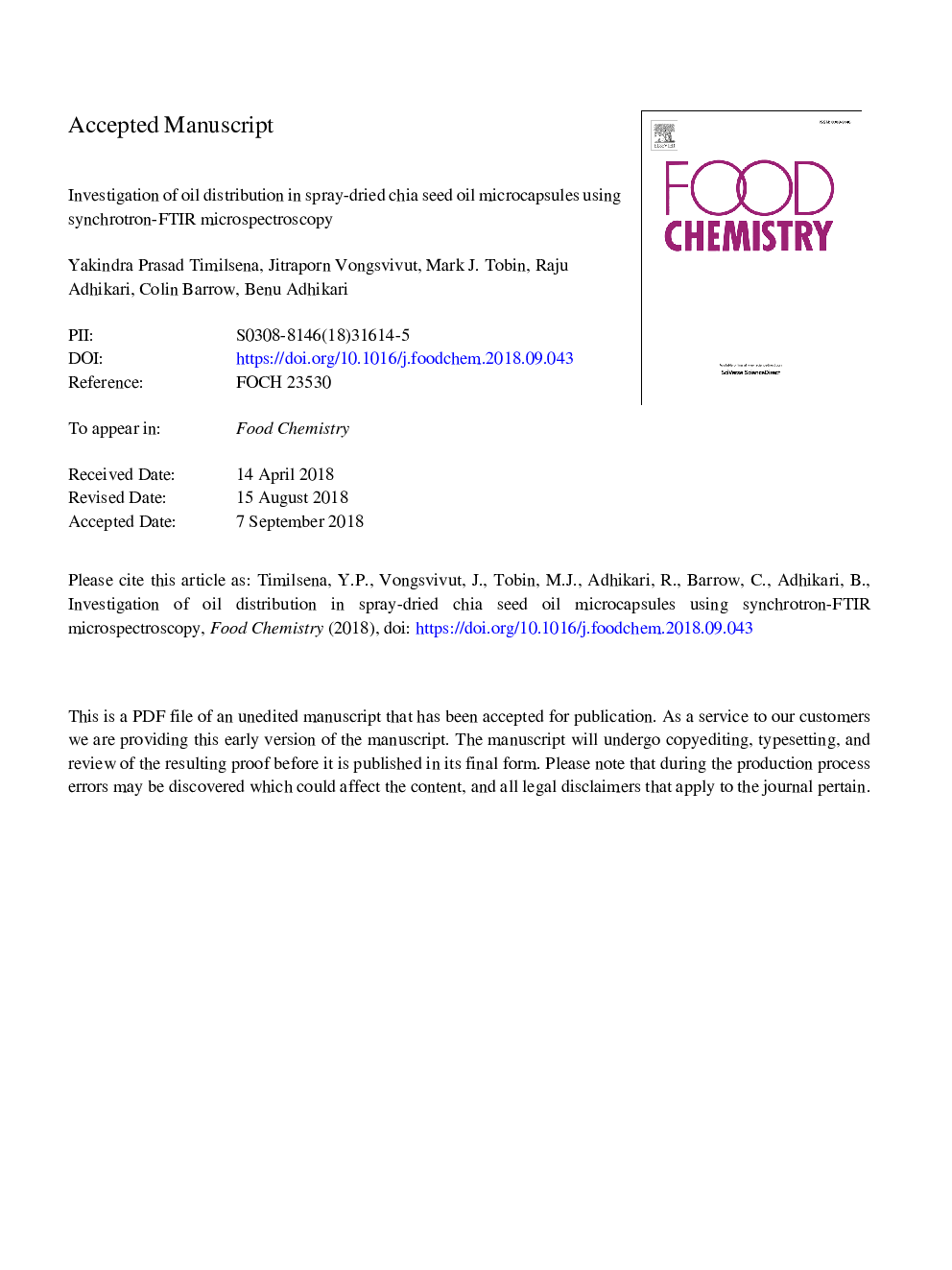| Article ID | Journal | Published Year | Pages | File Type |
|---|---|---|---|---|
| 11027417 | Food Chemistry | 2019 | 41 Pages |
Abstract
In this study, chia seed oil (CSO) microcapsules were produced using three types of shell materials, including chia seed protein (CPI), chia seed gum (CSG) and CPI-CSG complex coacervates. Synchrotron-Fourier transform infrared (S-FTIR) microspectroscopy was used to investigate the effect of shell materials on the distribution of CSO both on the surface and in the interior of the solid microcapsules. S-FTIR measurements were carried out in macroscopic attenuated total reflection (macro ATR) and transmission modes, to determine the surface lipid and the encapsulated lipid fractions, respectively. The amounts of lipid and protein distributed on the surface and in the interior of the microcapsules were compared based on the average spectra extracted from S-FTIR chemical images obtained from each type of the microcapsules. The unsaturated fatty acids (UFAs) to total oil ratios in all the three types of the microcapsules were closely similar to the original non-processed CSO, suggesting an effective encapsulation and thereby shielding protection of UFAs from oxidative damage during microencapsulation process. The type of the shell materials was found to affect the distribution of CSO on the surface and within the microcapsules. The complex coacervation based microcapsules had a significantly lower oil content (â¼2% w/w) on the surface compared to those observed for the other two types of microcapsules (>5%, w/w).
Related Topics
Physical Sciences and Engineering
Chemistry
Analytical Chemistry
Authors
Yakindra Prasad Timilsena, Jitraporn Vongsvivut, Mark J. Tobin, Raju Adhikari, Colin Barrow, Benu Adhikari,
